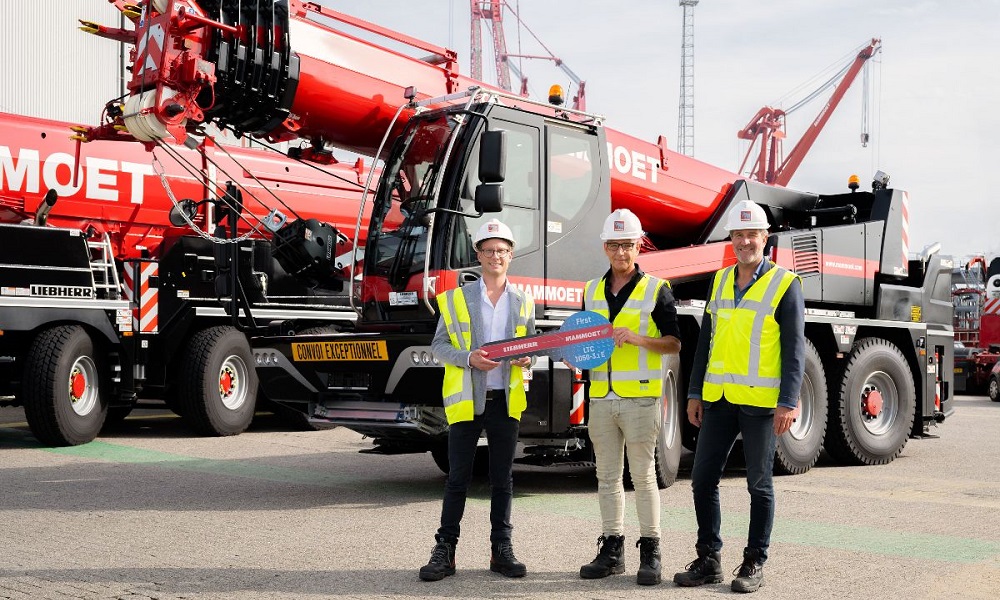Mammoet, the world’s largest engineered heavy lifting and transport company, is taking an important step towards site sustainability by adding the Liebherr LTC 1050-3.1E, the first electric hydraulic crane, to its impressive fleet.
This cutting-edge crane boasts the ability to power its lifting movements with electricity, delivering full performance while emitting zero on-site emissions.
In an era where heavy construction projects across all industry sectors are under increasing pressure to reduce their carbon footprint, meet stringent regulatory requirements, and contribute to achieving 2030 climate targets, Mammoet is emerging as a trailblazer in sustainability efforts.
Mammoet’s commitment to sustainability has led to the adoption of various groundbreaking technologies, including the world’s first electric self-propelled modular transporter, the electric SK crane series, electric skidding options, and much more. The introduction of the Liebherr LTC 1050-3.1E marks yet another significant stride towards minimizing carbon emissions for all customers.
What sets this electric hydraulic crane apart is its flexibility when it comes to power supply. It can be seamlessly connected to a 32A-rated, 63A-rated, or 125A-rated supply on-site, eliminating the constraints of battery power and allowing for uninterrupted operation. Additionally, its electric operation translates to minimal noise during use, enhancing safety on construction sites.
Peter van Oostrom, Global Projects and Assets Director at Mammoet, emphasized the significance of this innovation, stating, “Cranes in the 50-tonne range are ideal to serve as a test bed for innovative technologies, as such equipment is at work around the clock for Mammoet. This allows us to offer new technologies to the largest possible number of customers, and for it to be put through its paces, demonstrating its viability in live industrial environments quickly.”
The Liebherr LTC 1050-3.1E will join Mammoet’s fleet in the Netherlands and will be deployed on a variety of projects spanning the civil and energy sectors. All lifting operations will be powered by electricity. When it comes to mobility between job sites, the crane is fully compatible with HVO (Hydrotreated Vegetable Oil) fuel products, which provide an impressive 90% reduction in CO2 emissions compared to diesel.
“This crane will complement our existing mobile fleet, offering customers who wish to reduce the carbon impact of lifting an attractive option,” continued van Oostrom. “It will also provide Mammoet with greater flexibility when taking on jobs in small physical spaces, particularly indoors, where its zero-emission capability is particularly important.”
The Liebherr LTC 1050-3.1E is now poised to embark on its inaugural project. Customers looking to minimize their carbon footprint are encouraged to reach out to their local Mammoet location for further information on this eco-friendly lifting solution. Mammoet’s commitment to sustainability and innovation continues to reshape the future of heavy construction projects, prioritizing environmental responsibility and cutting-edge technology.
